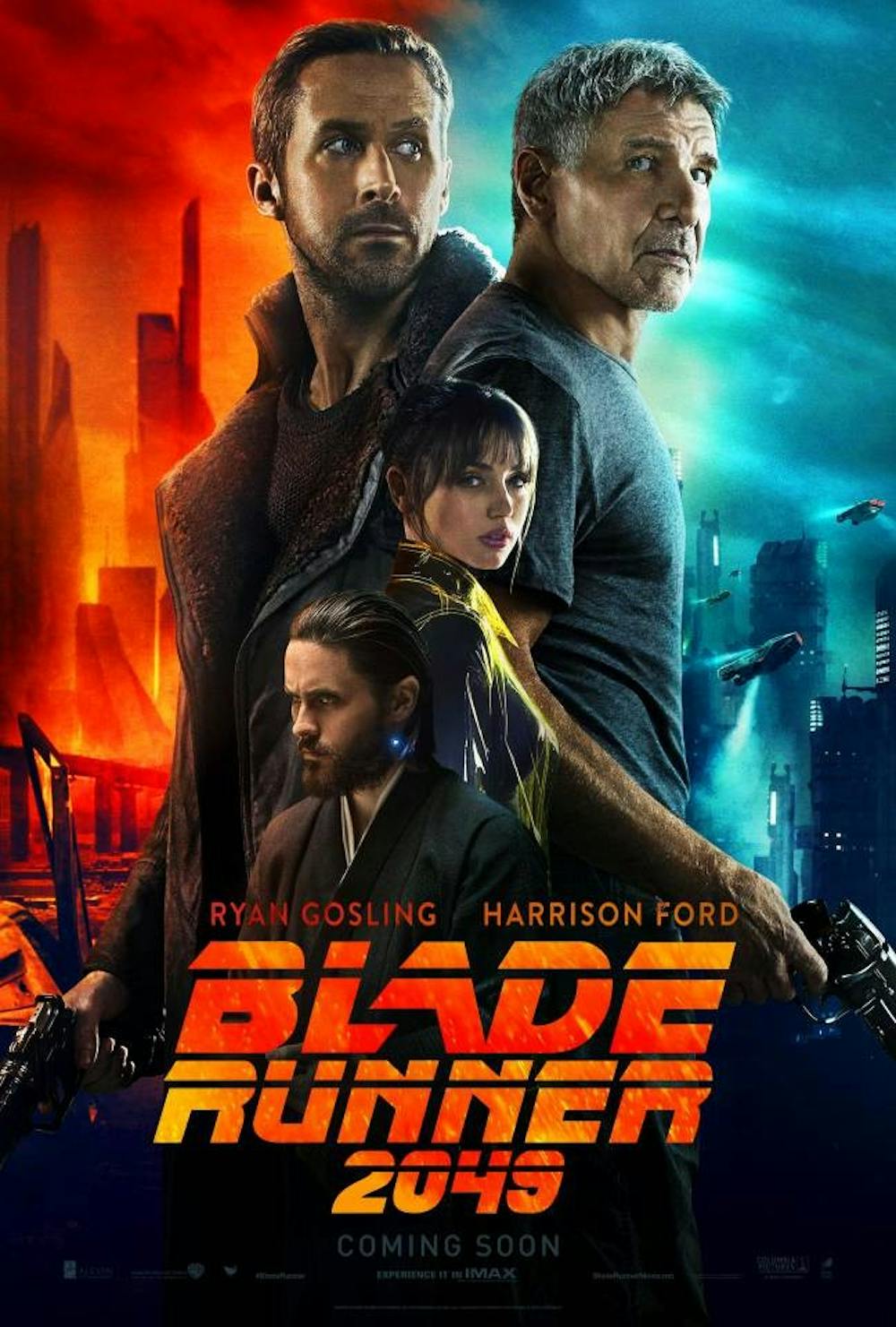Warning: LOTS of spoilers ahead. #sorrynotsorry.
Some films are better at asking than telling, and Blade Runner 2049, a sequel to the 1982 cyberpunk science fiction film Blade Runner, is one of them. There are some gaps in storytelling, but the film’s major questions more than make up for this flaw.
Blade Runner 2049 takes place 30 years after the original film. K, played by a fittingly stoic Ryan Gosling, is a blade runner—a police officer who hunts down cyborg slaves known as replicants and kills them if they fail to get along with humans. He's a replicant himself and has a simulated girlfriend Joi (Ana de Armas) with whom he has a deep romantic relationship. After his investigative team, led by Lieutenant Joshi (Robin Wright), discovers evidence that a replicant may have given birth, K is ordered by Joshi to find and kill the baby, as it may destroy the distinction between humans and replicants. K patches together clues and reaches the conclusion that retired blade runner Rick Deckard (Harrison Ford) and replicant Rachael (Sean Young)—the main protagonists of the 1982 film—are the parents of the miracle replicant baby and that K himself is that baby. He sets out to meet Deckard and ask him some questions when Deckard is captured by replicant assistant Luv (Sylvia Hoeks). Luv brings Deckard to her boss, replicant manufacturer Niander Wallace (Jared Leto), who interrogates him to find out the secret of replicant reproduction so that he can make more replicants with fewer resources.
Flaws first: Blade Runner 2049, unlike most other science fiction films, spends little time—if any—explaining the technical workings of its plot. After 35 years since the original film, fans are still not given an answer to their most burning question—“is Rick Deckard a replicant or not?”—and several questions that could shake the very premise of the film are never answered. However, director Denis Villeneuve so beautifully leads the audience toward his questions that it is quite easy, or perhaps even beneficial, for the audience to ignore the flaws in his storytelling. The 164–min running time would not bode well with more storytelling either.
Now to the merits, of which there are many. At surface level, Villeneuve and cinematographer Roger Deakins have created an aesthetically mesmerizing film that that is teeming with sweet but suffocating colors. Amber light pervades the screen for entire sequences, and flashing neons engineered to feel empty highlights the characters. These colors paint the characters more dynamically than the blue–tinted original does, both literally and figuratively. The emotions they feel can be sweet, but they are constantly challenged by their repercussions.
With the plot as well, the characters in the film are given more dimension than those in the original film. The original experimented with the idea of humanity by showing the replicants as more emotional than humans, but provided such little character development that it was hard for audiences to connect with the characters. The original tells of human emotions; the sequel shows. K starts out robotic and subdued but eventually reaches a cinematic high point of raw anger; Joi is merely a simulation but professes the most heartfelt love seen in this series. On the other hand, replicant manufacturer Wallace is human but shows no sympathy for his replicants; the love he claims to feel for them rings hollow. The line between human and non–human is again artfully challenged in three parallel scenes: rain slowly patters and spreads around Joi’s simulated hand, snow lands down and melts on K’s replicant hand, and simulated snow does not meet miracle replicant baby Ana’s hand, although each of their biologies—or lack thereof—suggests that Ana is the most human of the three. So if our biology cannot tell us if we are human, what can?
One answer that audiences can take from Blade Runner 2049 is that our decisions make us human. When all evidence seemed to point to K having been born from a mother, Joi tells him that he is special because he was “pushed out into the world.” However, we see that Wallace’s replicants are also pushed out into the world from an artificial amniotic sac. It also turns out that K was actually not born from a mother. So, in the biological sense, K is not human at all. However, replicant rebel leader Freysa offers another way to be human, saying that dying for a worthy cause is the most human thing one could do. And this K does. He sacrifices himself while fighting to bring Deckard to his daughter Ana. Other characters become more human with their decisions as well. Joi is technically immortal because she is a simulation, but she sacrifices herself by deciding to become mortal for her boyfriend.
Whereas the original Blade Runner asked if we were being human enough, Blade Runner 2049 goes further to ask us what decisions we might make to be human. What are we willing to fight for? If we can ever answer this question, we will be able to die human—as K does with Villeneuve’s signature content stoicism (last seen in Arrival) slowly lying back on the snow.







